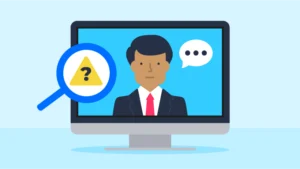Fake news, facts and questions guide
What parents need to know
Learn how to help children recognise fake news, misinformation, and AI-generated content. Explore simple tips, family activities, and tools to build their media literacy.

Guide to equip young people to tell fact from fiction
Help young people build their critical thinking about spotting fake news online.
Fake news refers to made-up or distorted stories that are presented as real news. It often spreads quickly on social media because it grabs attention and gets shared before people check the facts.
Misinformation is false or misleading information shared by mistake (for example, someone sharing a story they believe is true).
Disinformation is false information spread deliberately to deceive or influence people.
Helping children understand the difference encourages them to think critically about what they see online.
Encourage children to use the PAUSE check before believing or sharing anything online:
Post – read beyond the headline
Author – check who wrote it
Update – is it recent and relevant?
Source – find it on trusted outlets
Evidence – does the image or video match the claim, or could it be AI-generated?
You can also use co-viewing, talk about what they see, and guide them to trusted news sources.
Artificial intelligence can create realistic fake images, videos, or articles (known as deepfakes), making it harder to tell what’s real.
Children might see AI-generated content in their feeds without realising it. Talking to them about how AI works — and showing examples from trusted sources — helps them build awareness and confidence.
Tip: Visit our AI and online safety hub to learn more about how AI is shaping children’s online experiences.
- Stay calm and ask what they’ve seen and how it made them feel
- Reassure them that not everything online is true
- Use “Stop–Show–Share”: stop scrolling, show a trusted adult, share how they feel
- Use wellbeing tools like mute keywords or take screen breaks
- For ongoing distress, speak with school or mental health support
Encourage children to:
- Try our Find the Fake quiz
- Explore BBC Newsround together
- Use trusted fact-checking sites like Full Fact, BBC Verify, and Reuters Fact Check
